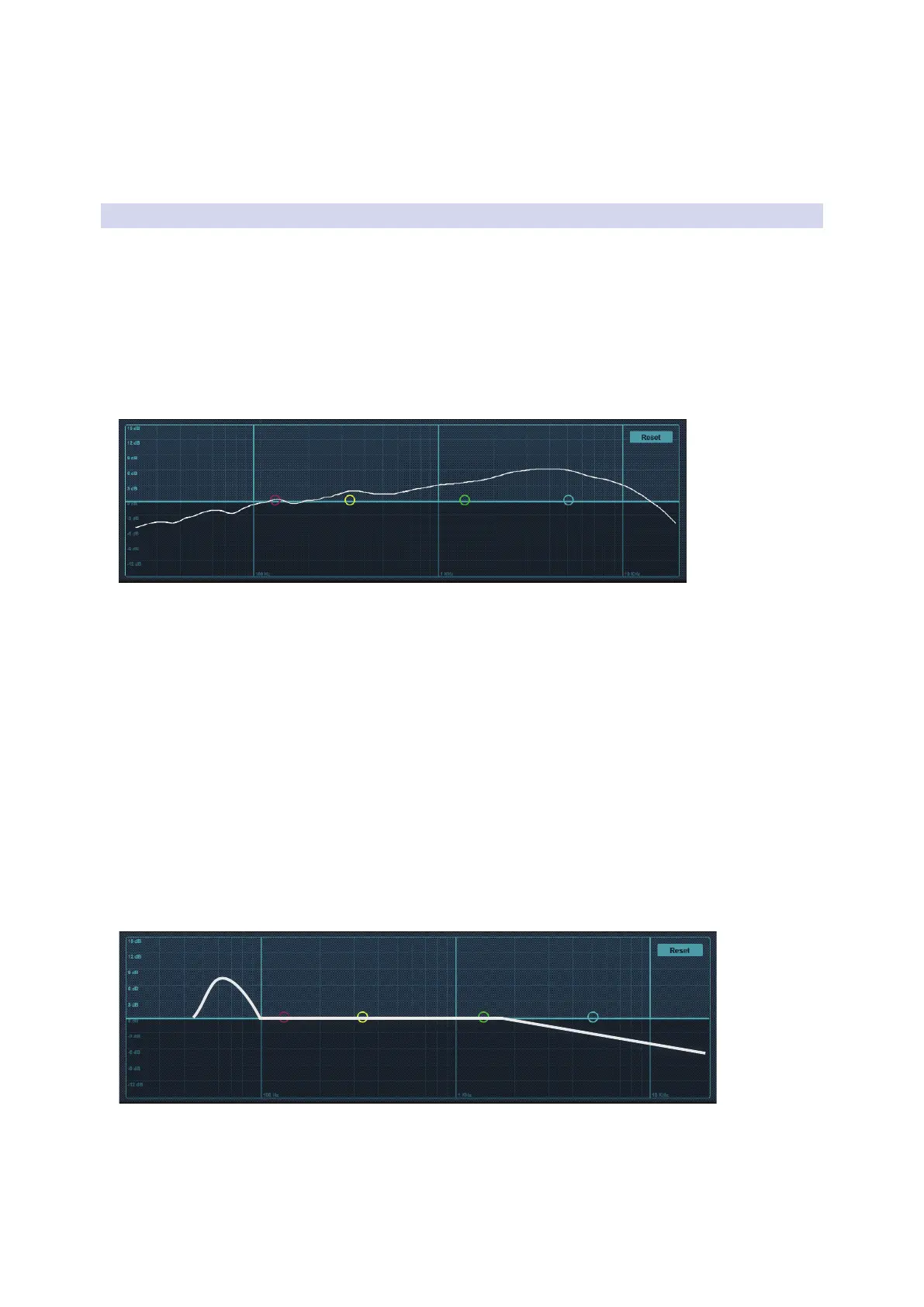PreSonus Quantum ES 4 handleiding
Handleiding
Je bekijkt pagina 75 van 97

71
13 The Settings Page
13.9 Smaart System Check Wizards (StudioLive AI-series only)
Universal Control for StudioLive
®
Mixers
Software Reference Manual
A frequency-response trace is not a video game. Your goal is to fix your system and make it sound the best
it can, not create an EQ curve that is an exact inversion of the frequency-response trace. Mix with your ears,
not your eyes.
An analyzer is a tool; you are the carpenter. You decide where to measure your speakers. You decide what the
resulting data means. You decide what (if anything) to do about it.
13.9.6 Using the Trace: Spotting the Trend
As discussed in the previous section, many factors can affect the response of a sound system: the room,
system configuration, electronics, wiring, and more. Part of understanding what you see is knowing what you
should not be seeing—or at least having a basic idea of what to expect. After all, you are trying to sculpt the
EQ curve of the system into something that compliments that sound system’s frequency response.
For example, a small system without a subwoofer can’t reproduce much energy below 50 Hz. In fact, this
frequency cutoff could be even higher, depending on the size of the speaker, its factory tuning, porting, etc.
This means that if you are analyzing a system that is comprised of two 2-way, 12” powered speakers, you
should expect your frequency-response trace to drop off around 50 Hz or so (depending on the frequency
response of your speakers). Because of this, boosting low frequencies in this type of system wouldn’t achieve
much and may introduce more problems than it would solve.
Power User Tip: A subwoofer can significantly change the frequency response of a full-range system. A
3-way system with a subwoofer will be 6 to 18 dB hotter below 80 to 100 Hz than a 3-way system without a
subwoofer. Keep this in mind when viewing your trace.
Different types of live performances make different demands of a PA system. A classical concert has very
different needs from a rock concert. Just as you wouldn’t mix an evening of Bach quartets the same as an
evening of thrash metal, you don’t want to tune your PA system the same for both types of events.
A classical concert doesn’t need an exaggerate subwoofer output. The audience and performer expect
and want a natural reproduction of the music. In contrast, systems that are tuned for a rock show will use
subwoofers essentially as an effect. This is how they achieve those pummeling kick and toms and huge bass
guitar sound: the system is pre-tuned with more bass response.
In other words, you can stack the deck to be assured of a big FOH mix win. In system alignment, this deck
stacking is called “trends.” Every genre and performance type requires a different type of trend. The sole
objective of a system EQ is to smooth out the sound system by creating a uniform slope that the system
follows. This will give your system a more uniform sound and performance, as well as better clarity, because
your system has been pre-EQ’d to meet the needs of the concert.
Below are some examples of trends for various applications:
Music Concert
Subs
2 to 4 kHz
Bekijk gratis de handleiding van PreSonus Quantum ES 4, stel vragen en lees de antwoorden op veelvoorkomende problemen, of gebruik onze assistent om sneller informatie in de handleiding te vinden of uitleg te krijgen over specifieke functies.
Productinformatie
| Merk | PreSonus |
| Model | Quantum ES 4 |
| Categorie | Niet gecategoriseerd |
| Taal | Nederlands |
| Grootte | 17151 MB |

